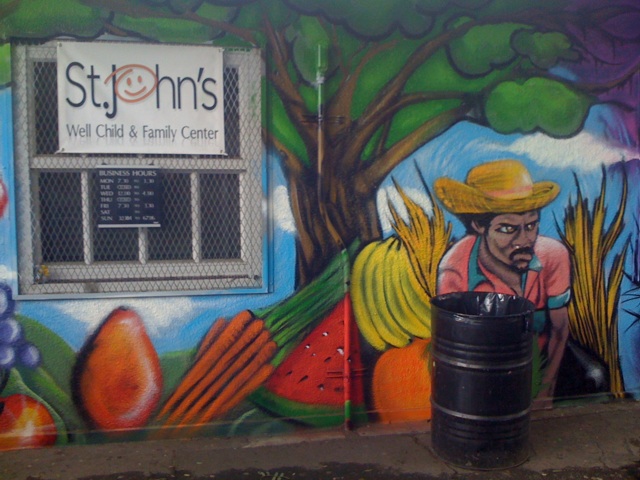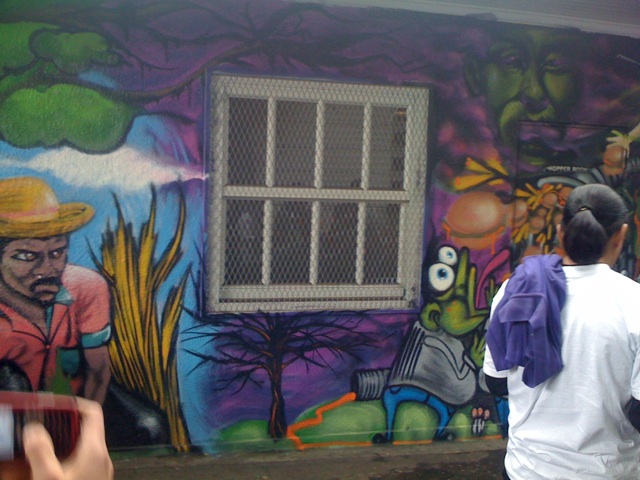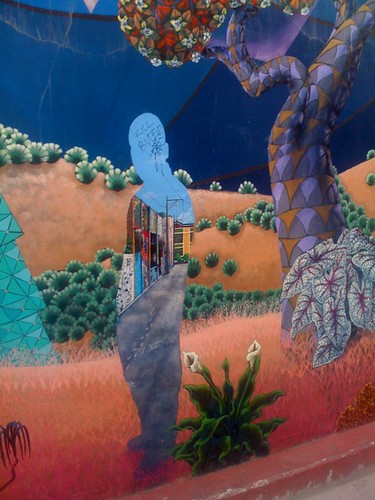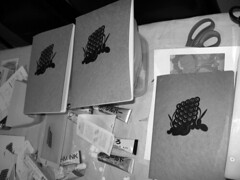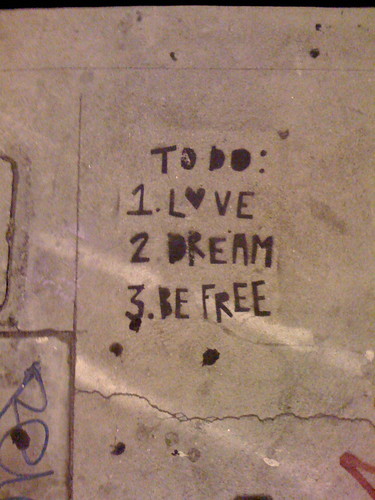
Haunting a new favorite place in the city, I found the above stenciled art a useful reminder about priorities and usage of time. As I type this, an ever-growing pile of articles and books teeters menacingly to my left. To my right, a stack of fellowship, grant, and conference forms & applications in varying states of duress meander from couch to floor. Sadie snores bemusedly in the corner as I riffle through one pile then another. My computer screen is a personified Jackson Pollock splash of awaiting-reply emails and tabbed-to-infinity Safari windows. And I guess this is the ocean I’ve been lost in for the past few weeks as I’ve been off-track from teaching duties at Manual Arts. Catching breath and wandering outside, it was useful to be challenged by a simple, quickly sprayed stencil. Having recently seen Banksy’s film, Exit Through the Gift Shop, I would argue that such a specimen is demonstrative of art’s ability to better the day-to-day lived experience of those it interacts with, regardless of medium or location.
[I’m again pondering the above as well for lessons of borders and space and classroom discourse, though not ready to jump into such a substantive rant quite yet.]

